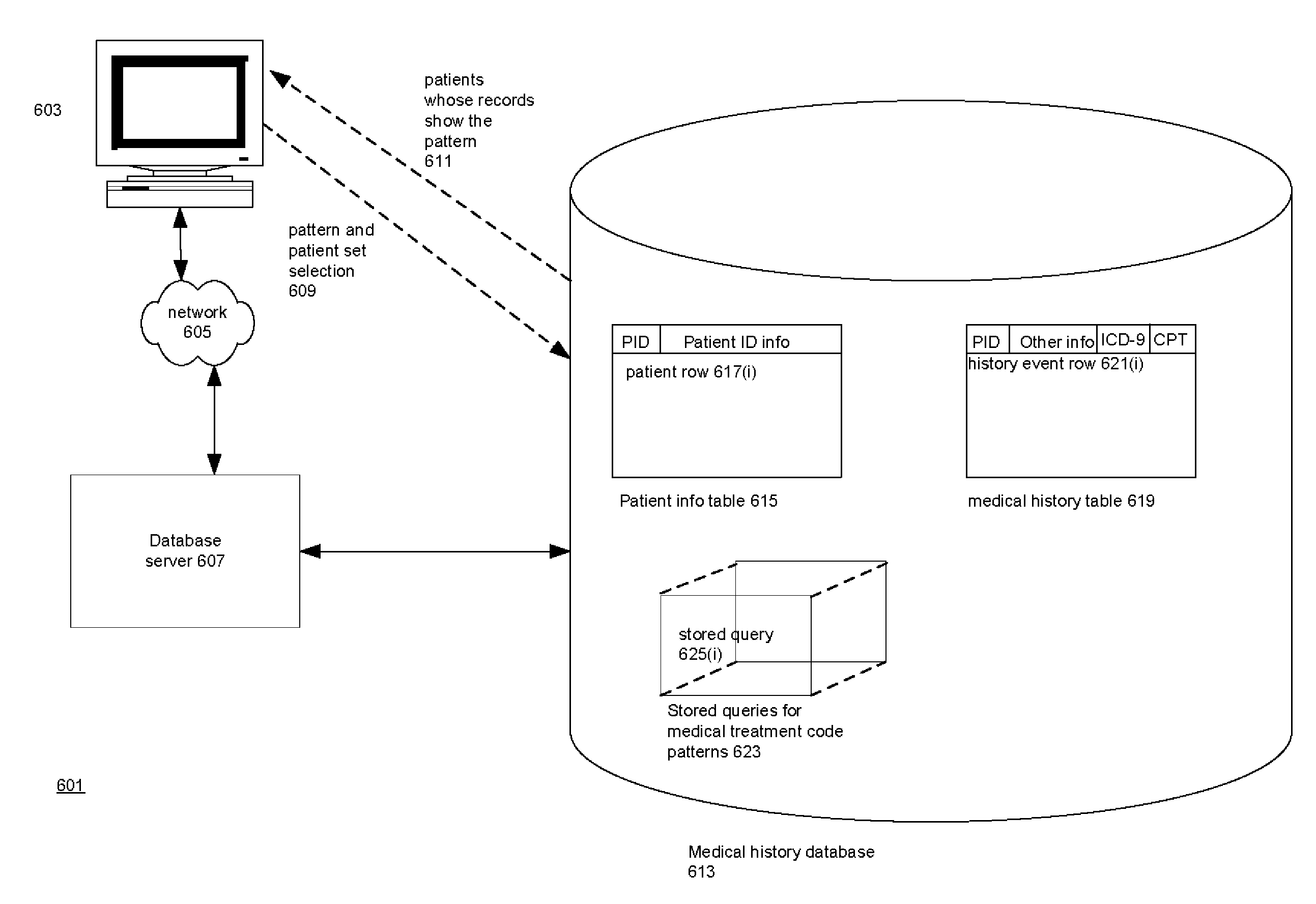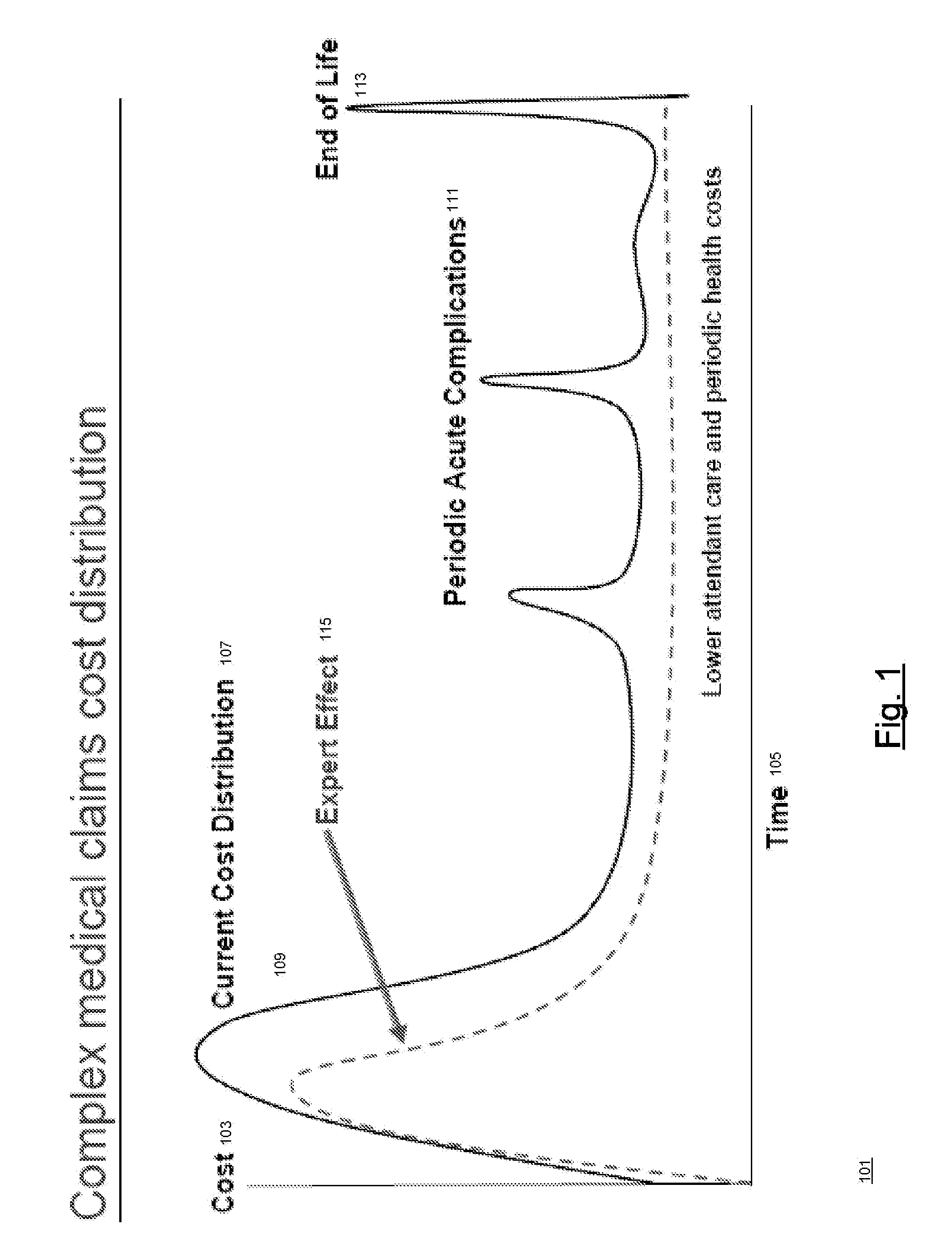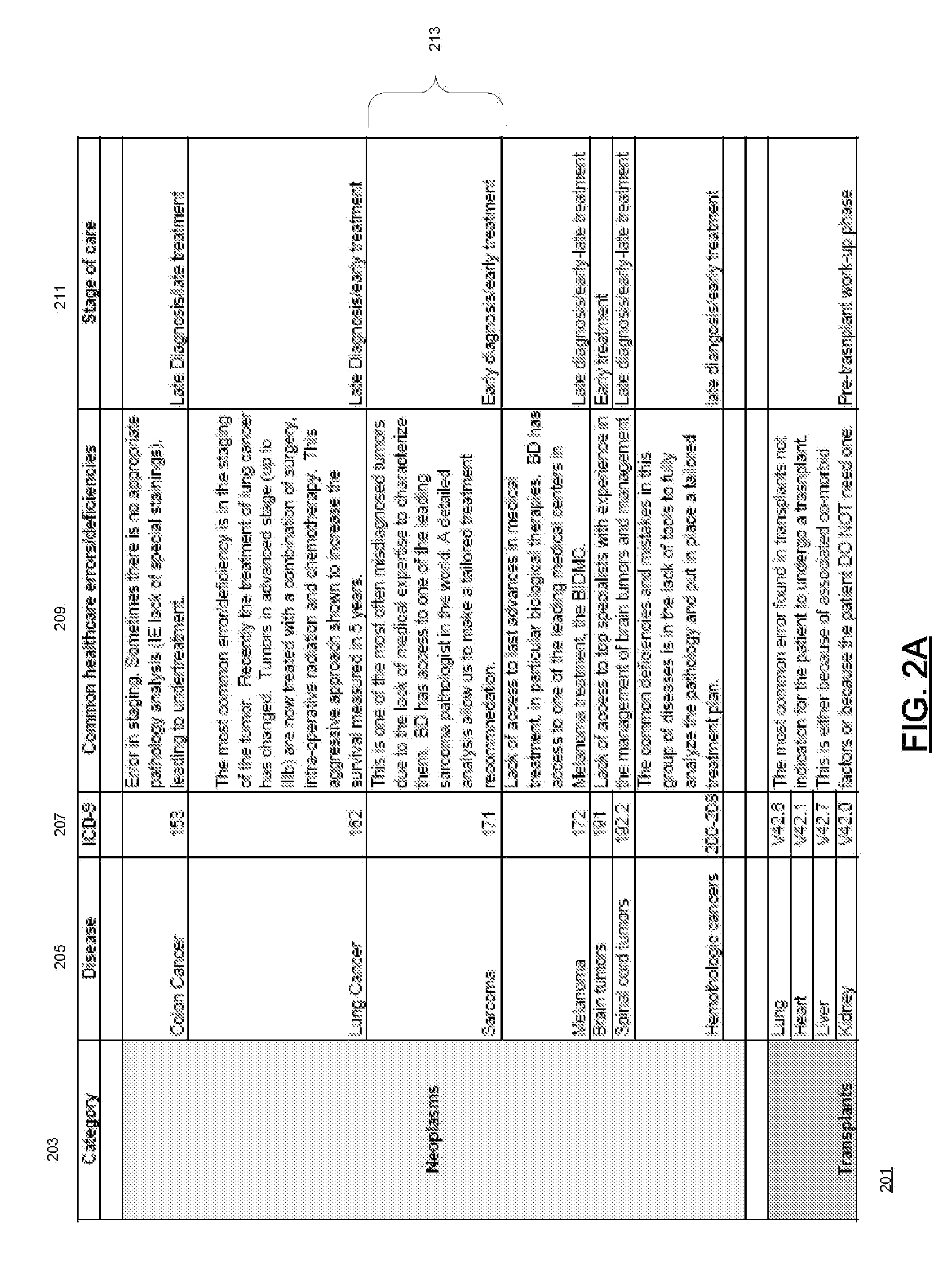Using patterns of medical treatment codes to determine when further medical expertise is called for
- Summary
- Abstract
- Description
- Claims
- Application Information
AI Technical Summary
Benefits of technology
Problems solved by technology
Method used
Image
Examples
Embodiment Construction
[0033]Medical Diagnostic and Treatment Codes
[0034]The techniques for determining whether a medical condition is a complex condition which are disclosed in the following are based on two sets of codes that are used in the United States to indicate medical conditions and treatments in medical records.[0035]The set of codes that are used to indicate medical conditions is the ICD-9-CM (International Classification of Diseases, 9th revision, Clinical Modification) coding system. These codes are termed in the following ICD-9 codes. For example, the ICD-9 code for sarcoma is 171.[0036]The set of codes that are used to indicate medical procedures are CPT (Current Procedural Terminology) codes and CPT is used for those codes in the following. For example, one CPT code for a biopsy is 11100.
[0037]The current CPT codes may be found in CPT 2007 Professional Edition (CPT / Current Procedural Terminology (Professional Edition)) by Michael Beebe, Joyce A. Dalton, Martha Espronceda, Desiree D. Evans,...
PUM
 Login to View More
Login to View More Abstract
Description
Claims
Application Information
 Login to View More
Login to View More - R&D
- Intellectual Property
- Life Sciences
- Materials
- Tech Scout
- Unparalleled Data Quality
- Higher Quality Content
- 60% Fewer Hallucinations
Browse by: Latest US Patents, China's latest patents, Technical Efficacy Thesaurus, Application Domain, Technology Topic, Popular Technical Reports.
© 2025 PatSnap. All rights reserved.Legal|Privacy policy|Modern Slavery Act Transparency Statement|Sitemap|About US| Contact US: help@patsnap.com



